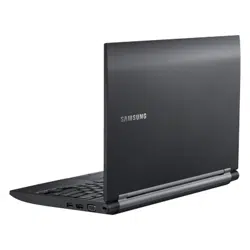Loading ...
Loading ...
Loading ...

138
Chapter 5.
Appendix
Regulatory Compliance Statements
Wireless Guidance
(If tted with 2.4G band or 5G band)
Low power, Radio LAN type devices (radio frequency (RF) wireless
communication devices), operating in the 2.4GHz/5GHz Band, may
be present (embedded) in your notebook system. The following
section is a general overview of considerations while operating a
wireless device.
Additional limitations, cautions, and concerns for specic countries
are listed in the specic country sections (or country group
sections). The wireless devices in your system are only qualied for
use in the countries identied by the Radio Approval Marks on the
system rating label. If the country you will be using the wireless
device in, is not listed, please contact your local Radio Approval
agency for requirements. Wireless devices are closely regulated
and use may not be allowed.
The RF eld strength of the wireless device or devices that may
be embedded in your notebook are well below all international
RF exposure limits as known at this time. Because the wireless
devices (which may be embedded into your notebook) emit less
energy than is allowed in radio frequency safety standards and
recommendations, manufacturer believes these devices are safe
for use. Regardless of the power levels, care should be taken to
minimize human contact during normal operation.
As a general guideline, a separation of 20 cm (8 inches) between
the wireless device and the body, for use of a wireless device near
the body (this does not include extremities) is typical. This device
should be used more than 20 cm (8 inches) from the body when
wireless devices are on and transmitting.
Some circumstances require restrictions on wireless devices.
Examples of common restrictions are listed on the next page:
Radio frequency wireless communication can interfere •
with equipment on commercial aircraft. Current aviation
regulations require wireless devices to be turned o while
traveling in an airplane.
802.11ABGN (also known as wireless Ethernet or Wi) and
Bluetooth communication devices are examples of devices
that provide wireless communication.
In environments where the risk of interference to other •
devices or services is harmful or perceived as harmful,
the option to use a wireless device may be restricted or
eliminated. Airports, Hospitals, and Oxygen or ammable
gas laden atmospheres are limited examples where use
of wireless devices may be restricted or eliminated. When
in environments where you are uncertain of the sanction
to use wireless devices, ask the applicable authority for
authorization prior to use or turning on the wireless device.
Loading ...
Loading ...
Loading ...
